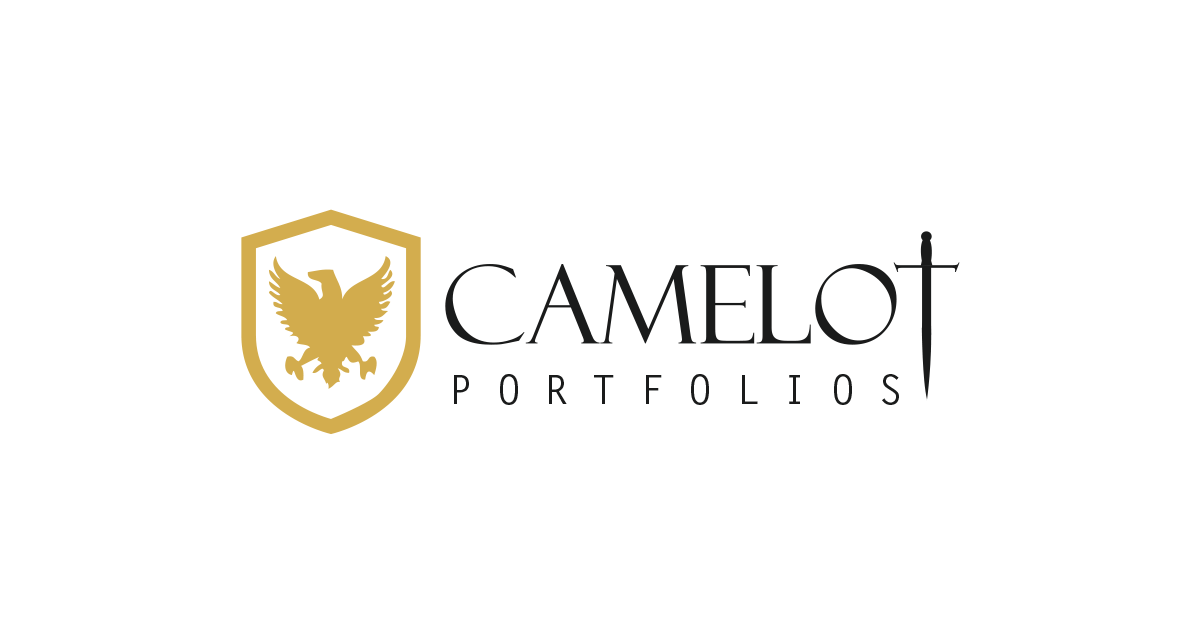Coronavirus & Sanders: Jolt of Uncertainty
By Paul Hoffmeister
CoronaVirus: All about Treatment and Containment
The market outlook became much cloudier in late January due to the uncertainty caused by the Coronavirus outbreak and the recent surge by Bernie Sanders.
To paraphrase Frank Knight, the early 20th century University of Chicago economist, “risk” applies to situations where we do not know the outcomes but can reasonably measure the odds; whereas “uncertainty” applies to situations where we simply do not have sufficient information to confidently measure the odds.
Within this framework, one can easily argue that the Coronavirus epidemic in China created a textbook case of uncertainty. Where did the virus come from? How deadly would it be? And, how far would it spread?
On January 23, 2020 Chinese authorities expanded travel restrictions imposed on the city of Wuhan to surrounding municipalities, shut down travel networks, and attempted to quarantine 25 million people.[i] What was considered by many as an epidemic localized in Wuhan suddenly became a potential global pandemic, evoking memories of SARS and Ebola.
As of the time of this writing, Johns Hopkins estimates that more than 20,000 people have been infected in 27 countries, with 427 dead. And according to CNBC, at least 24 Chinese provinces, municipalities and regions have told businesses not to resume work until February 10.[ii] This shutdown in Chinese production is huge, as these parts of the country account for more than 80% of China’s GDP.[iii]
One can see that accurately measuring the consequences of the Coronavirus – in terms of human and economic costs – can be exceedingly difficult, especially if the virus were to spread much more. Therefore, it’s not surprising that January 23rd, when this relatively contained epidemic seemed to begin morphing into a potential global pandemic, marked the recent peak in the S&P 500. On a closing basis, the S&P 500 traded at 3325.54 on Thursday January 23, and fell 3% to a low of 3225.52 on Friday January 31.[iv]
For some context for thinking about the market impact of a major, deadly viral outbreak, we estimate that the SARS and Ebola episodes in 2003 and 2004, respectively, led to approximately 5% to 11% selloffs in the S&P 500.
The histories of the SARS and Ebola outbreaks as well as what we’re currently seeing with the Coronavirus suggest that the key questions for markets are: will the respective outbreak be relatively contained, and will the symptoms be mostly treatable? In the Knightian sense, concrete answers to these questions can transform highly immeasurable “uncertainty” into much more quantifiable “risk”. And that may be what we have been seeing recently.
While the human and economic costs of the Coronavirus have been massive, recent information offer some hope that this crisis will be contained.
First, effective treatment strategies may be on the way. For example, in Thailand, doctors have reported success in treating severe cases with a combination of anti-flu and anti-HIV medications.[v] Thailand’s health ministry has reported that a previously positive testing 71-year old patient tested negative for the virus after starting the combination.[vi] This news appeared to break on Sunday February 2, and in our view, may have been the key factor behind the strength in the S&P 500 beginning the next day. Then, on February 5, Sky News reported that a British scientist made a breakthrough in the race for a vaccine, which could reduce the development time from two to three years to just 14 days.[vii] The news appeared to further support the strength in equities this week.
Secondly, measures to contain the outbreak have been drastic. As most of us have seen, travel into and out of Hubei province has mostly stopped, and travel into and out of China has been significantly restricted. This may be the world’s largest quarantine in history. Additionally, the New York Times has reported that Chinese officials are utilizing the country’s vast surveillance network to track down infected citizens, as well as those that may have been near them; and even offering bounties of 1,000 yuan for each infected Wuhan person reported by residents.[viii] [ix] Leaving democratic and privacy principles aside, it’s possible that these extreme measures may be what financial markets want to see as far as containment is concerned.
While it took months for the SARS and Ebola outbreaks to get under control, and this will likely be the case with the Coronavirus, the improving outlook for treatment and containment should encourage financial markets going forward. We will almost certainly see infection counts and death tolls continue to rise during the near-term. But as long as treatment and containment continue to be effective, the rates of infection and death should ultimately crest.
The Bernie Rally
The political market is increasingly eventful these days, and should be so as the primetime of the Democratic primaries happens during the next 60 days.
The big news is: Mayor Peter Buttigieg surprised many with his victory-by-a-nose in the Iowa Caucus, and former Vice President Joe Biden’s prospects to secure the nomination have plummeted. According to the Predictit betting market, Biden was being priced on January 8, at a 43% probability to win the Democratic presidential nomination. As of February 4, he traded at 20%.
But the biggest news in the political arena is the ascension of Bernie Sanders to front-runner status. Between January 8 and February 4, his odds on Predictit of securing the nomination jumped from 32% to 39%, with a high of 46% on February 2.
Interestingly, the Bernie Rally seemed to ignite on January 24, after popular podcast host and UFC commentator Joe Rogan said on his podcast that he will “probably” vote for Sanders, after having interviewed him months ago.[x] The next day, Bernie’s Predictit odds jumped to a new high of 38% (from 34% on January 24), and his odds haven’t closed below 38% since. According to Slate, Rogan’s podcast was Apple Podcasts’ second most downloaded podcast in 2017 and 2018.[xi] Without a doubt, the landscape of political news and influencers has dramatically changed in recent years.
The next two months may very well decide the Democratic nominee. New Hampshire is February 11, Nevada February 22, and South Carolina February 29. According to Predictit, the front-runners in each are, respectively, Sanders (at 83%), Sanders (66%), and Biden (60%).
Then “Super Tuesday” takes place on March 3, when nearly a third of all delegates are awarded; of which the biggest prizes are California and Texas with 415 and 228 delegates, respectively.[xii] Currently, Sanders is the front-runner in both states in the Predictit market.
January may turn out to be a major inflection point in the Democratic political market for the White House, with Sanders’s ascension and Biden’s plunge.
The consensus appears to be that President Trump is extremely pro-stock market, while Sanders may be the polar opposite. But what sectors will be most at-risk should Sanders win the general election in November? As we see it, Sanders could be especially negative for private prisons, gun manufacturers, student loan services, healthcare, private equity, and industries that benefit from a low minimum wage such as retail, leisure and hospitality.
We’ll likely see some movement or discounting in the stocks of these sectors during the coming months, especially if Sanders’s momentum continues. But, of course, one cannot easily assume Bernie Sanders will be president in 2021. Predictit is currently pricing in a 54% probability of a Republican winning in November; with Republicans likely keeping the Senate, and Democrats the House.
Paul Hoffmeister is chief economist and portfolio manager at Camelot Portfolios, managing partner of Camelot Event-Driven Advisors, and co-portfolio manager of Camelot Event-Driven Fund (tickers: EVDIX, EVDAX).
*******
Disclosures:
• Past performance may not be indicative of future results. Therefore, no current or prospective client should assume that the future performance of any specific investment, investment strategy (including the investments and/or investment strategies recommended by the adviser), will be profitable or equal to past performance levels.
• This material is intended to be educational in nature, and not as a recommendation of any particular strategy, approach, product or concept for any particular advisor or client. These materials are not intended as any form of substitute for individualized investment advice. The discussion is general in nature, and therefore not intended to recommend or endorse any asset class, security, or technical aspect of any security for the purpose of allowing a reader to use the approach on their own. Before participating in any investment program or making any investment, clients as well as all other readers are encouraged to consult with their own professional advisers, including investment advisers and tax advisors. Camelot Portfolios LLC can assist in determining a suitable investment approach for a given individual, which may or may not closely resemble the strategies outlined herein.
• Any charts, graphs, or visual aids presented herein are intended to demonstrate concepts more fully discussed in the text of this brochure, and which cannot be fully explained without the assistance of a professional from Camelot Portfolios LLC. Readers should not in any way interpret these visual aids as a device with which to ascertain investment decisions or an investment approach. Only your professional adviser should interpret this information.
• Some information in this presentation is gleaned from third party sources, and while believed to be reliable, is not independently verified.
[i] “Chinese cities cancel New Year celebrations, travel ban widens in effort to stop coronavirus outbreak,” by Anna Fifield and Lean Sun, January 23, 2020, Washington Post.
[ii] “More than half of China extends shutdown over virus,” By Eveyln Chang, February 1, 2020, CNBC.
[iii] Ibid.
[iv] Source: Yahoo Finance.
[v] “Cocktail of flu, HIV drugs appears to help fight coronavirus: Thai doctors,” by Panu Wongcha-um, February 3, 2020, Reuters.
[vi] “Thailand Says New Drug Cocktail Successfully Treated Coronavirus in Chinese Patient in 48 Hours,” February 3, 2020, News18.com.
[vii] “British scientist makes breakthrough in race for coronavirus vaccine,” February 5, 2020, Reuters.
[viii] “China, Desperate to Stop Coronavirus, Turns Neighbor Against Neighbor,” by Paul Mozur, February 3, 2020, New York Times.
[ix] “China Sacrifices a Province to Save the World from Coronavirus,” by Claire Che, Dandan Li, Dong Lyu, Rachel Chang and Iain Marlow, February 4, 2020, Bloomberg News.
[x] “Podcast host Joe Rogan endorses Bernie Sanders,” January 24, 2020, Yahoo Finance.
[xi] “Joe Rogan’s Galaxy Brain,” by Justin Peters, March 21, 2019, Slate.
[xii] Source: New York Times





